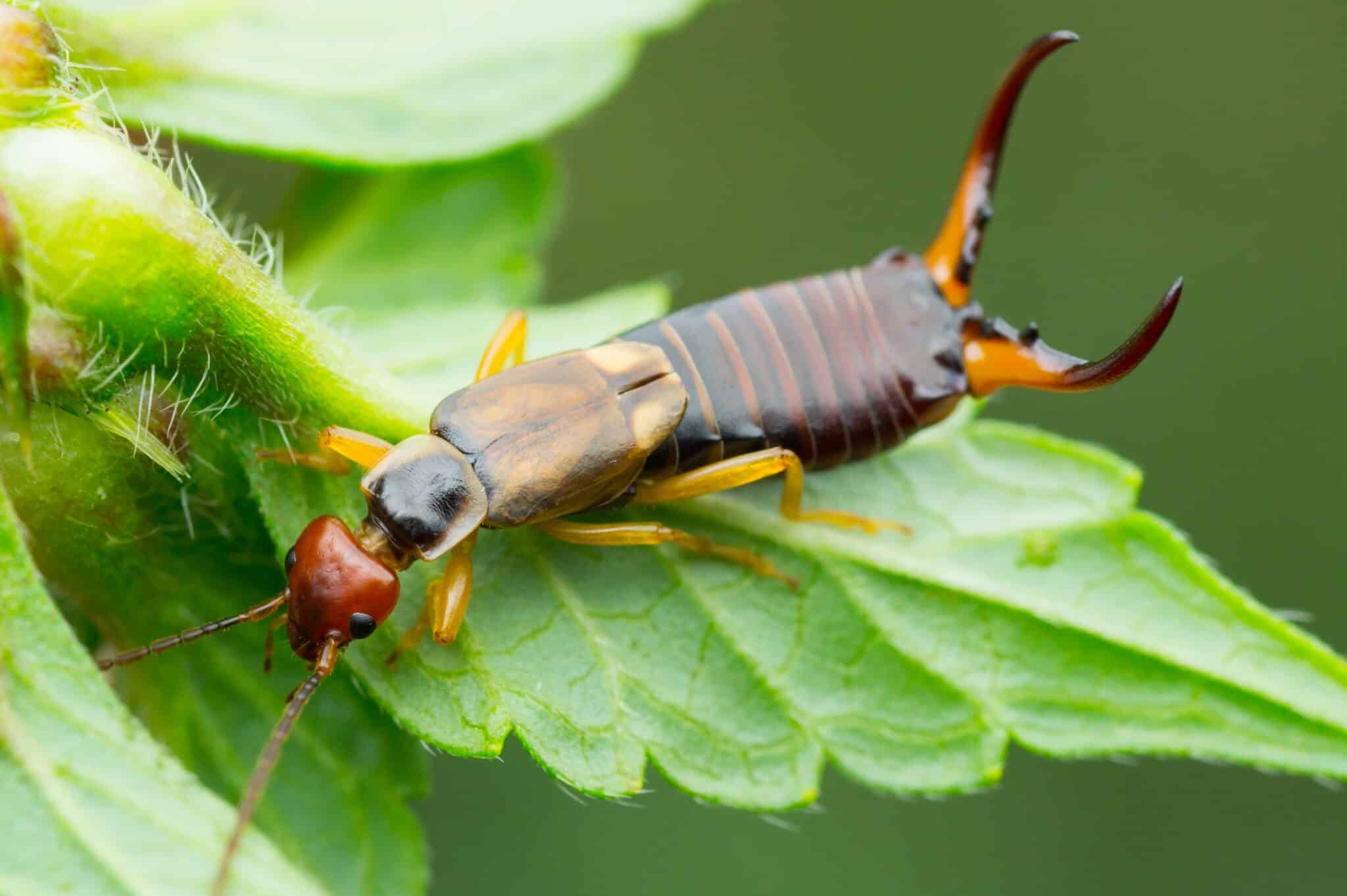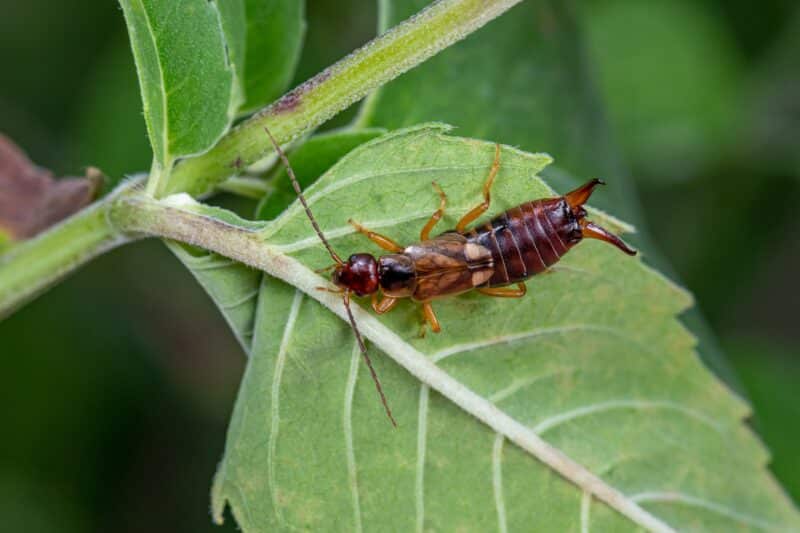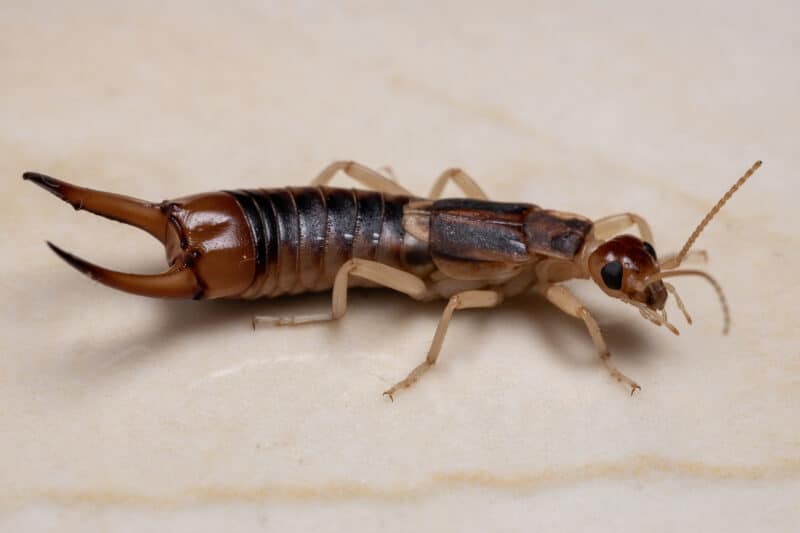Earwigs
Earwigs can be a nuisance for homeowners, as they are known to infest gardens, causing damage to crops, flowers, and other plants, and sometimes make their way into homes. It is important to have effective earwig pest control services in place to eliminate and prevent infestations. Flick Pest Control offers professional pest control services to help effectively eliminate and prevent earwigs from invading your property. With our expertise and knowledge in dealing with various pest infestations, we can provide tailored solutions to ensure your home remains pest-free. Don’t let earwigs take over your space – trust Flick Pest Control to handle the job efficiently and effectively.
Flick Home Protection makes protecting your family and home from pests easier than ever. Our effective and affordable pest control plans include an exclusive 12-month warranty, regular pest inspections, and solutions tailored to your specific situation. Earwigs are included in our Gold Complete Home Protection Plan. With year-round protection, you can have peace of mind knowing you and your property are kept safe from these destructive pests. Find out more here.

Shield Your Family & Home Year Round from Earwigs
Flick's Home Protection Plans
Flick's Home Protection Plans provide effective and affordable protection for your home and family from a wide range of pests. Our Gold plan includes preventive measures to stop earwigs from entering your home in the first place, as well as reactive and emergency earwig pest control services if needed. All plans come with a 12-month warranty* and easy monthly payments. With a variety of plans to choose from, you can find a plan that meets your specific needs and budget. Contact your local Flick branch to see if Home Protection is available in your area and begin shielding your family from earwigs today!
Commercial Pest Solutions
Integrated Earwig Solutions
It is essential for businesses to prioritise the health and safety of their employees and customers. Earwigs not only pose a health risk but also damage property and reputation. Flick’s professional commercial pest control services provide tailored solutions to prevent and eliminate any pest infestations, ensuring a clean and hygienic environment for everyone. Our regular inspections and treatments help to maintain a pest-free workplace and protect your business from potential pest related damage. Trusting in Flick’s commercial pest control solutions is a smart investment in the long-term success and reputation of any business.
Common Earwig Questions
Are earwigs harmful to humans?
Earwigs are not harmful to humans. While they may appear intimidating with their pincers, they are generally considered harmless pests. Earwigs primarily feed on decaying vegetation, insects, and occasionally plant material. They do not pose any direct health risks to humans and do not transmit diseases. However, it is worth noting that in rare cases, earwigs may pinch if they feel threatened, which can cause a minor discomfort.
How do earwigs enter homes?
Earwigs can enter homes in various ways. They are nocturnal insects that are attracted to moisture and darkness, so they often seek shelter in damp and dark areas around the house. They can enter through cracks or gaps in doors, windows, and foundations. They are also known to hitch a ride on items such as clothing, boxes, or plants that are brought inside the house. Once inside, they can hide in moist areas like bathrooms, basements, or kitchens.
What do earwigs eat?
Earwigs have a diverse diet and are known to consume both plant material and small insects. They often feed on decaying leaves, flowers, and fruits, as well as on other insects, small spiders, and mites. Additionally, earwigs may also eat aphids, caterpillars, and other soft-bodied insects, making them beneficial predators in gardens and agricultural fields. However, they can also cause damage to crops and ornamental plants if their population becomes too large.
How can I prevent earwigs from infesting my garden?
First, remove any debris or decaying plant matter from the garden as earwigs are attracted to these areas. Additionally, consider creating a barrier around your garden by placing a strip of gravel or sand around the perimeter, as earwigs are less likely to cross these types of surfaces. Regularly inspect your plants for signs of earwig damage and take immediate action if you notice any. You can also use organic insecticides or create homemade traps using oil or soy sauce to attract and capture earwigs.
Common Earwig Species

European Earwig (Forficula Auricularia)
Apppearance
The European Earwig has a long, slender reddish-brown body with prominent pincers at the end of its abdomen.
Lifestyle
The European Earwig is known for its unique mating behavior, where the male and female engage in a courtship ritual that involves physical contact and the male providing food for the female.
Habits
European Earwigs are primarily nocturnal creatures, hiding in dark and damp areas during the day and emerging at night to feed on a variety of plant material, insects, and decaying matter.

Striped Earwig (Labidura Truncata)
Apppearance
Known for its unique appearance, the Striped Earwig has distinct stripes on its body, which vary in colour from brown to black and assists with camouflage. This insect also has elongated pincers, or forceps, at the end of its abdomen, which it uses for defense and capturing prey.
Lifestyle
Striped Earwigs are known for their solitary nature, with minimal social interactions within their own species.
Habits
The Striped Earwig is primarily nocturnal and feeds on decaying organic matter, as well as small insects. They are often found in dark and damp habitats, such as under rocks or in leaf litter.
I found Earwigs! Help!
Don't worry, we're here to help. Follow these steps to stay safe until help arrives!
Call a Professional
Call Flick Pest Control Immediately.
If you encounter earwigs in your home or business, you may be dealing with an infestation. Don’t wait until the problem gets out of hand – we can help protect your property and ensure the health and safety of those around you. Fill out the form below or call 1300 270 019 today.
Leave the Earwigs Alone
Trust Flick Pest Control to handle the situation
Our pest control technicians have the knowledge, experience, and tools necessary to effectively and safely eliminate pests from your home or business. Attempting to treat earwigs on your own can be risky and may not fully eradicate the problem.
We will and ensure a safe and effective outcome for your property.
There May be More!
Don’t Go Looking Around!
Flick’s pest control experts will perform a thorough inspection of the property to identify any areas where earwigs may be present, followed by the development of a treatment plan tailored to the specific needs of the situation. By implementing effective pest control strategies, we can help ensure a pest-free environment for you.

